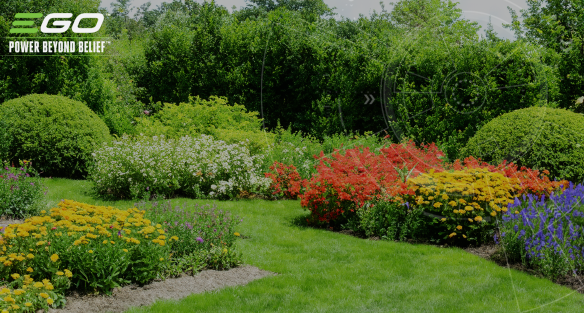With increased awareness on the impacts of climate change, there are more and more ways that we can help turn the tide against rising greenhouse gas emissions. Investing in cordless tools like an EGO battery lawn mower or cordless hedge trimmer is a good start. However, there is more you can do to help the environment.
Turning your garden into a carbon sink is just another way you can do your bit for the environment and help absorb carbon dioxide. The process isn’t difficult and with the combination of using battery powered garden tools you’ll still get use out of them whilst helping the environment too.
What size garden do I need?
Any size garden is appropriate for a carbon sink. Even the smallest of patches can absorb CO2 so long as you implement the right garden practices.
With larger gardens, you can always designate an area to act as a carbon sink and keep the rest as you’d like if you still want to have a neat, tidy and healthy lawn.
Several practices to make a garden sink
Give preference to native plants
Choosing plants that naturally thrive in your area will mean that they are more likely to thrive in your garden, absorbing more CO2 as they flourish. They will require less care and attention too, so you won’t have to worry about giving them extra special care.
The best way to determine what’s native to your garden is to walk around the countryside and see what’s growing. Woodlands, hedgerows and places where land is untouched from human interference are excellent places to see what plants are naturally thriving.
Plant hedges
Hedges of all types help absorb CO2 from the atmosphere as they grow. Not only do hedges act as thriving mini ecosystems on their own, but it’s also been estimated that hedgerows absorb as much CO2 as entire woodlands.
Your hedge will still need to be maintained of course, so this shouldn’t be an excuse to let it become overgrown! Also, why would you not want to use your EGO cordless hedge trimmer - trimming your hedge is excellent exercise.
Plant a tree (or two)
It’s estimated that a broadleaf tree can absorb more than two tonnes of CO2 in its lifetime. Trees like oaks, sycamores, maples and chestnuts all count as broad leaf, and many more too. Coniferous trees like spruces, cedars and pines absorb more CO2 in a 30 year period than their broad leaf cousins.
How many you decide to plant is entirely up to you and the space you have in your garden. Just one tree is enough to have an impact, especially since a typical tree absorbs as much as 25kg of CO2 per year.
Cover the soil
Soil in itself acts as a carbon store, however if left bare, the soil can degrade and leach carbon into the atmosphere. This is where mulching is beneficial. Mulch comes in many forms, from grass clippings after mowing your lawn to wood chips. Applying a thick layer of mulch over the surface of bare patches of soil helps to trap the CO2 in the soil.
With EGO cordless mowers, mulching has never been easier. Battery lawn mowers like the EGO LM1702E-SP cut your lawn and mulch the clippings at the same time. All you need to do is scatter the cuttings on the bare patches of soil so it’s covered and stop it from seeping CO2 into the atmosphere.
EGO cordless tools further reduce CO2
When you come to turn your garden into a carbon sink, by using an EGO tool (where it calls for it), you will reduce your carbon footprint even further.
EGO battery powered garden tools are a better choice for the environment than petrol powered equivalents. EGO tools use next-generation lithium-ion batteries which emit zero emissions that are harmful to the environment or health.
To see which EGO tool is best suited for your gardening needs, check out our range of Power Plus, Professional and Professional-X tools. Not only do they help reduce your carbon footprint, they come with excellent warranty too.
Challenge 2025 - creating a cleaner, quieter, safer future
If each of us made the small change to battery powered outdoor tools, it would have a huge positive impact on our environment. Challenge 2025 is our commitment to changing the future of gardening for the better.
Our vision is that, within five years, battery power will become the principal power source for outdoor power equipment. This will lead to significant reductions in emissions and noise, while at the same time increasing safety and user comfort. We will achieve this by empowering outdoor power equipment users to move away from petrol.
Together, we will build a cleaner, quieter, safer future.
